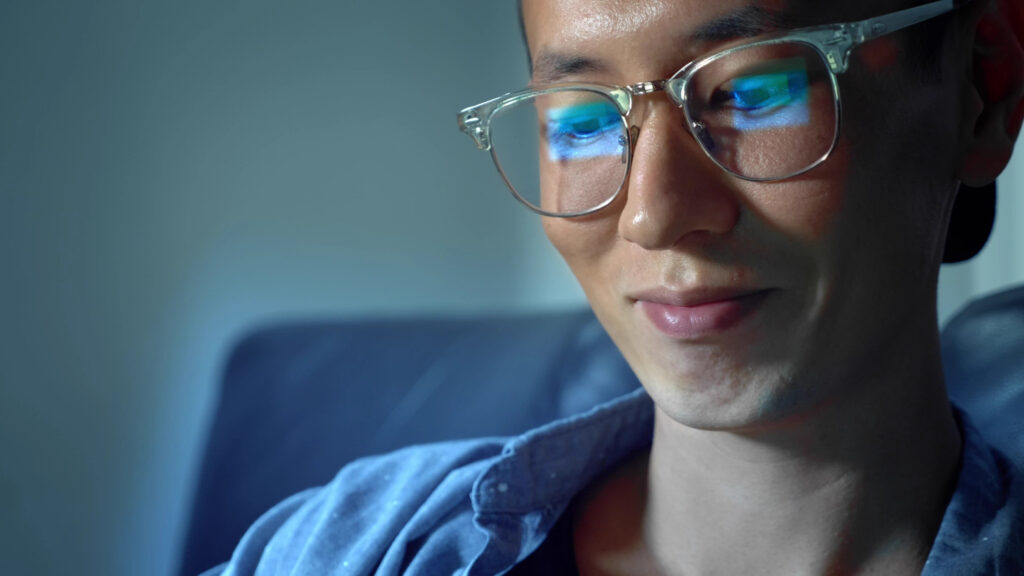Blue light-filtering glasses are extensively marketed as devices that will reduce adverse effects of light-emitting screens on sleep, but there is little scientific evidence to support those claims.
Blue Light
Visible light includes a short segment of wavelengths tucked into the electromagnetic radiation spectrum. Together, the wavelengths of visible light captured by our eyes are translated into white light by our brains. Measured in nanometers (nm), visible light wavelengths range from 400 to 700 nm. Blue-light wavelengths lie between about 450 and 495 nm.
Sleep-Wake Cycles and Blue Light
Our sleep-wake cycle is a circadian rhythm (a natural oscillation that repeats roughly every 24 hours and is regulated by a circadian clock). When certain cells in our eyes detect darkness, they send a message to the suprachiasmatic nucleus, or SCN in the hypothalamus. The SCN stimulates the pineal gland to produce melatonin, which makes us sleepy.
The greatest source of blue light is the sun. This is the primary reason for becoming and maintaining wakefulness during the day. But as sunlight diminishes, the brain senses the loss of blue light, and the pineal gland begins to produce melatonin, thus promoting sleep.
Many of us scroll through pages on our phones and laptops at bedtime. The blue light emitted from those screens signal the brain to remain awake by blocking the production of melatonin. Recent studies with small sample sizes indicate that a one to two-hour exposure to blue light before bedtime will result in the loss of sleep quality:
- One study found that using an e-reader one hour before bedtime prolongs the time it takes to fall asleep, cuts the amount of REM sleep, and diminishes alertness the following morningi.
- Another study found that two hours of blue light exposure at night shortens sleep time, disturbs sleep, and leads to more grogginess the next dayii.
- Additional research revealed that one hour of blue light exposure stimulates the production of cortisol, a stress hormone that increases alertness and blocks sleepiii.

Evidence for the Use of Blue Light Filtering Lenses
- One study identified six small, randomized trials which examined sleep outcomes with use of blue light-filtering lensesiv. Trial results were inconsistent, and meta-analysis could not be performed due to high heterogeneity and lack of quantitative outcome data.
- A study involving 20 adults found that wearing blue-blocking glasses three hours before bed significantly improved sleep quality and mood compared to a control groupv.
- A trial on 14 people with insomnia who wore blue-light-blocking glasses for two hours before bed found that compared to clear placebo lenses, the blue-light-blocking glasses improved sleep time, sleep quality, and soundness of sleep.
- A trial with 20 healthy adults who wore blue-light-blocking-glasses for a week from 6 p.m. until bedtime concluded that these glasses did not improve sleep time or quality after a week of testingvi.
Summary
Anecdotal evidence indicates that physicians generally counsel their patients to avoid the use of electronics at least 30 minutes before their usual bedtime rather than using blue-light filtering devices. While there is some evidence to the usefulness of blue light filtering glasses, the lack of quantitative outcomes in larger cohorts requires further study before comprehensive conclusions can be reached.








